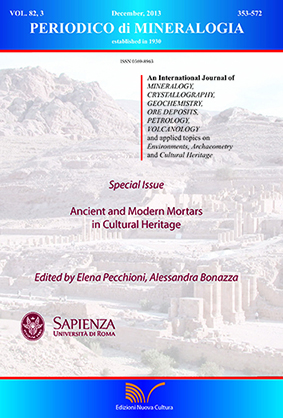An unusual mortar with a magnesium binder in the Perseus of Giovan Battista Pieratti in Boboli Gardens (Florence)
DOI:
https://doi.org/10.2451/2013PM0022Keywords:
glueing mortar, Giovan Battista Pieratti, Boboli GardenAbstract
The restoration of Perseus Boboli Gardens (Florence, Italy), a sculptural complex realized by Giovan Battista Pieratti in the 30th of the XVII century mostly as reuse and reinterpretation of fragments of ancient Roman sculptures, offered the opportunity to face the problem of the structural consolidation of a fragmented sculpture. During disassembly of this sculptural complex it was possible to observe an overlapping of techniques and materials that covers more than three and a half centuries, from the first half of the XVII century until the 80s of the XX century. One of the materials used as glue of the pivots showed an unusual composition, characterized by a magnesium hydroxide based binder (brucite) and brucite and barite as aggregate. It is probably an old mortar still in excellent conservation conditions.


